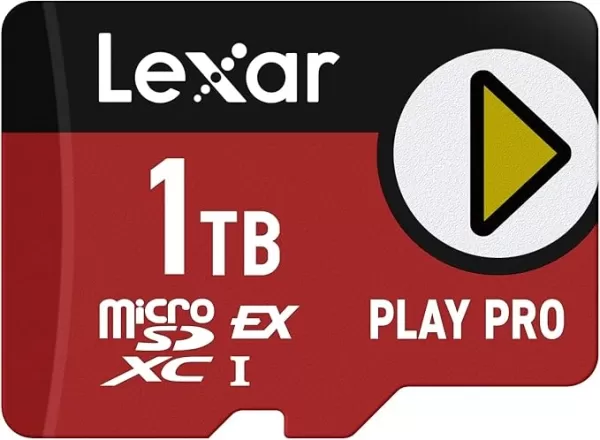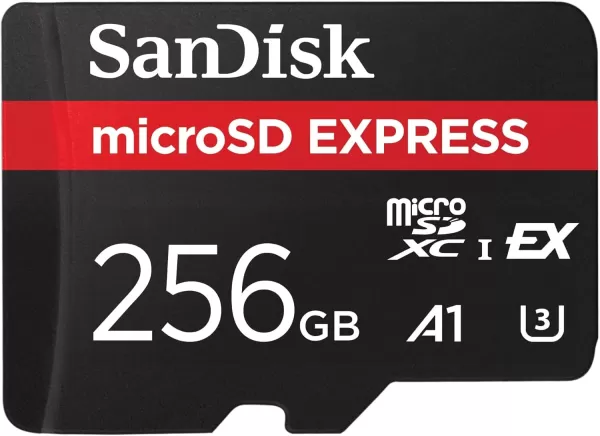MicroSD Express: Essential for Nintendo Switch 2
Last week, Nintendo unveiled the Nintendo Switch 2, revealing that it exclusively supports expansion via MicroSD Express cards. This change might be frustrating for those with existing collections of MicroSD cards, but it's a strategic move aimed at significantly enhancing performance. MicroSD Express cards offer read/write speeds comparable to the Universal Flash Storage (UFS) used in the Switch 2's internal storage, theoretically enabling games on the expansion card to load as quickly as those stored internally. However, this advancement comes with the trade-off of not being able to use more affordable non-Express MicroSD cards.
MicroSD vs. MicroSD Express
The evolution of MicroSD card speeds has been remarkable. Starting with the initial SD cards boasting a mere 12.5MB/s, the industry has seen substantial improvements. Over the years, we've moved from SD High Speed at 25MB/s to SD UHS III at 312MB/s. The game-changer came five years ago with the introduction of the SD Express standard, which significantly boosted performance by adopting a PCIe 3.1 interface instead of the slower UHS-I. This shift allows full-sized SD Express cards to reach transfer speeds up to 3,940MB/s. While MicroSD Express cards don't match these peak speeds, they still deliver impressive performance, achieving up to 985MB/s—three times faster than the fastest non-Express MicroSD cards.
Why Does the Switch 2 Require MicroSD Express?
Although Nintendo typically keeps its hardware decisions under wraps, the rationale behind requiring MicroSD Express cards for the Switch 2 is clear: speed. Games installed on a MicroSD Express card will load much faster than those on a traditional UHS-I MicroSD card due to the PCIe 3.1 interface. This requirement aligns with the console's internal storage upgrade to UFS from eMMC, ensuring that expansion storage matches the internal storage's performance. Early demonstrations indicate significant load time improvements, ranging from a 35% faster fast-travel time in games like Breath of the Wild, as reported by Polygon, to a threefold initial load speed increase noted by Digital Foundry. These enhancements could be attributed to the faster internal storage or the improved CPU and GPU, but the need for equally fast external storage is evident to prevent bottlenecks in future games.
Moreover, this move sets the stage for even faster storage solutions in the future. The current SD 8.0 Specification allows full-size SD Express cards to reach speeds of up to 3,942MB/s, and while MicroSD Express cards aren't there yet, they could be soon, especially if the Switch 2 is designed to support such speeds.
MicroSD Express Capacity Options
Currently, the adoption of MicroSD Express cards has been slow, but this is expected to change with the Nintendo Switch 2's launch. Lexar, for instance, offers a single MicroSD Express card in capacities of 256GB, 512GB, and 1TB, with the 1TB model priced at $199.

Lexar Play Pro MicroSD Express
0See it at Amazon
SanDisk has also entered the fray with a single MicroSD Express card, topping out at 256GB, which matches the Switch 2's internal storage capacity. As the Switch 2 hits the market, we can expect more options to become available, particularly with larger storage capacities, as companies like Samsung ramp up production.

SanDisk MicroSD Express 256GB
0See it at Amazon
- 1 STARSEED Update: Codes for January 2025 Released Feb 25,2025
- 2 Pokémon TCG Pocket: Wonder Pick Date, Time, and Promo Cards – February 2025 Mar 03,2025
- 3 How to Get All Ability Outfits in Infinity Nikki Feb 28,2025
- 4 Black Myth: Wukong Tops Steam Charts Days Before its Launch Jan 07,2025
- 5 Project Zomboid: All Admin Commands Jan 05,2025
- 6 Ukrainian Internet Stalled as 'S.T.A.L.K.E.R. 2' Release Overwhelms Dec 30,2024
- 7 inZOI, a Korean Sims-Like, Delayed to March 2025 Mar 01,2025
- 8 Starseed Asnia Trigger Codes (January 2025) Mar 06,2025
-
Budgeting & Investing: Your Guide to Financial Apps
A total of 9
-
Addictive Hypercasual Games for Quick Play
A total of 10
-
Best Role Playing Games for Android
A total of 10






























